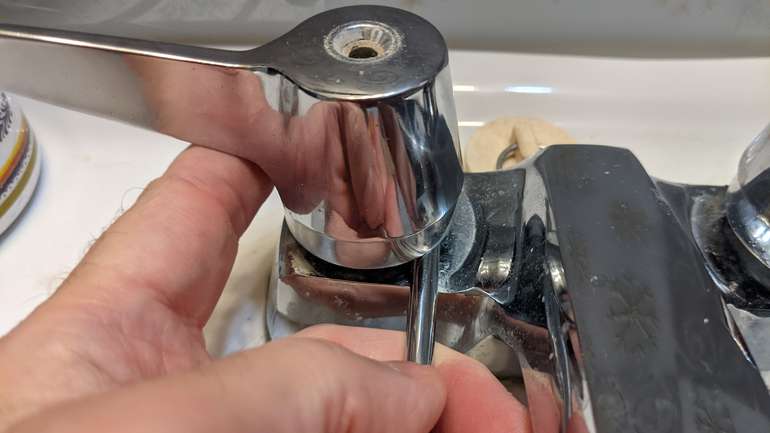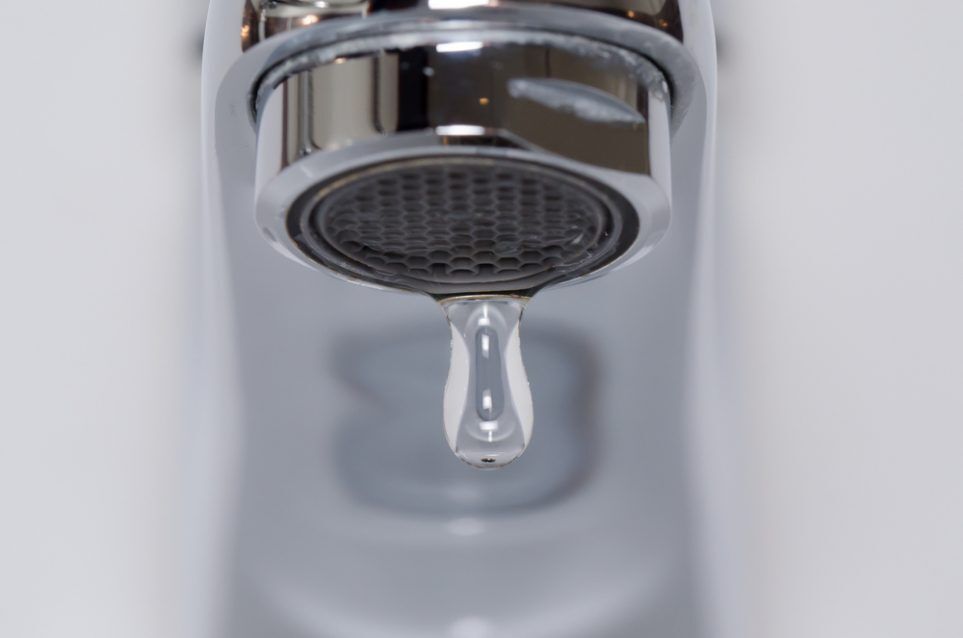Our Advantages of Repairing a Faulty Faucet
Our Advantages of Repairing a Faulty Faucet
Blog Article
Everyone will have their own opinion on the subject of Why Are My Faucets Dripping (And Can I Fix It Myself)?.

Leaking taps may feel like a minor trouble, yet their impact exceeds simply the annoyance of the noise. From drainage to sustaining unneeded monetary expenses and health risks, disregarding a leaking tap can bring about various consequences. In this short article, we'll look into why it's critical to address this usual family problem without delay and effectively.
Waste of Water
Ecological Impact
Dripping faucets contribute substantially to water wastefulness. According to the Epa (EPA), a single faucet dripping at one drip per secondly can throw away greater than 3,000 gallons of water annually. This not only strains water resources yet also influences environments and wild animals dependent on them.
Step-by-Step Overview to Taking Care Of a Dripping Tap
Devices Called for
Before attempting to take care of a dripping tap, gather the required devices, including a flexible wrench, screwdrivers, replacement components (such as washers or cartridges), and plumber's tape.
Typical Tap Issues and Their Solutions
Determine the kind of tap and the particular concern creating the drip. Typical troubles include damaged washing machines, corroded valve seats, or damaged O-rings. Refer to producer directions or on the internet tutorials for detailed support on repairs.
Financial Costs
Increased Water Bills
Beyond the ecological influence, trickling taps can blow up water expenses considerably. The gathered waste in time translates into greater energy costs, which could have been stayed clear of with prompt repair services.
Potential Residential Property Damage
Moreover, long term leaking can cause damage to components and surfaces surrounding the faucet. Water accumulation can trigger staining, rust, and even architectural issues if left ignored, resulting in extra repair expenses.
Wellness Issues
Mold and Mold Development
The constant visibility of moisture from a leaking tap develops an optimal setting for mold and mildew and mildew growth. These fungi not just endanger interior air quality but likewise pose health and wellness dangers, specifically for people with respiratory system problems or allergies.
Waterborne Diseases
Stagnant water in dripping taps can become a breeding ground for bacteria and other pathogens, increasing the threat of waterborne conditions. Impurities such as Legionella microorganisms prosper in stagnant water, potentially leading to serious ailments when consumed or inhaled.
DIY vs. Specialist Repair service
Pros and Cons of Do It Yourself Repair Work
While some might try to repair a trickling tap themselves, do it yourself repair work feature their own collection of difficulties. Without proper understanding and tools, do it yourself attempts can worsen the issue or cause insufficient repair work, lengthening the problem.
Advantages of Working With a Specialist Plumber
Hiring a specialist plumber makes certain that the underlying cause of the leaking faucet is attended to successfully. Plumbings have the knowledge and tools to detect and fix faucet issues effectively, saving time and lessening the danger of additional damages.
Ecological Obligation
Private Contribution to Conservation
Taking responsibility for repairing dripping faucets aligns with more comprehensive initiatives towards water conservation and environmental sustainability. Every individual's activities jointly make a considerable impact on preserving priceless resources.
Lasting Living Practices
By focusing on prompt fixings and taking on water-saving practices, people add to sustainable living techniques that benefit both existing and future generations.
Preventive Measures
Normal Maintenance Tips
To stop leaking taps, carry out regular maintenance such as cleaning up aerators, evaluating for leaks, and changing worn-out parts without delay. Furthermore, take into consideration installing water-saving gadgets or updating to more effective components.
Importance of Prompt Repair Works
Resolving dripping faucets as soon as they're discovered stops more water wastefulness and potential damage, ultimately saving both water and money over time.
Effect On Residential Or Commercial Property Value
Understanding of Well-Maintained Home
Preserving a residential property in good condition, consisting of attending to maintenance issues like dripping taps, boosts its viewed value and desirability amongst prospective purchasers or tenants.
Impact on Resale Worth
Qualities with well-kept plumbing components, including taps, command higher resale worths in the realty market. Addressing trickling faucets can add to a positive impact during property assessments and negotiations.
Verdict
Dealing with a trickling faucet exceeds plain comfort; it's a necessary step towards preserving water, reducing economic expenses, and safeguarding wellness and residential property. Whether via DIY fixings or expert assistance, acting to deal with leaking taps is a small yet impactful way to advertise liable stewardship of resources and add to a healthier, much more lasting future.
How to Fix a Dripping or Leaky Faucet
A leaking faucet is one of the most common problems that homeowners encounter, but it being commonplace doesn’t make it any less annoying. The constant drip drip drip of a leaking bathtub faucet, showerhead, or sink tap can disturb your home’s serenity. Left neglected, a dripping faucet can also result in higher water bills and discoloration or mold growth in your sink or plumbing fixtures.
Fortunately, you don’t have to be a trained plumber to know how to stop a dripping faucet. With some basic tools, replacement parts, and a little patience, leaky faucet repair is a breeze. In this article, we’ll explain what causes dripping faucets and how you can fix them.
What Causes a Leaking Faucet?
Kitchen and bathroom faucets come in all manner of designs, but most involve some combination of valves, O-rings, seals, and washers. The O-ring is usually the weakest link, but any one of these pieces can wear down over time. Heat, moisture, temperature fluctuations, minerals, mold, and movement can contribute to warping and corrosion, breaking the watertight seal. This just comes with the territory of being a homeowner. Everything is always subject to wear and tear, and some component parts of your appliances and fixtures need to be replaced on occasion. At least replacement O-rings are cheap!
More rarely, dripping faucets can be a symptom of excessively high water pressure. Were this the case in your home, you would probably notice that the leak is not isolated to one faucet. Water pressure issues are harder to resolve on your own. We recommend contacting a professional plumber if you suspect your water pressure is too high.
How to Fix a Dripping Faucet
Pipe wrench or monkey wrench Allen wrench set Screwdrivers Old towel or rag Shut off the water.
Before you do anything, you need to turn off the water to keep from drenching your kitchen or bathroom. You should find a valve under the sink and against the wall. Once you’ve turned this valve, try turning the faucet on to confirm that the water source has been cut off.
If you can’t locate your local valve for the faucet you’re working on, you can always shut off the water to the house at the main valve. Of course, this will prohibit anyone from using the sinks, showers, or toilets while you’re working on the faucet that’s giving you trouble.
Plug or block the drain.
You’ll be disassembling the faucet and removing some small bits of hardware. Plug the drain with a stopper or rag to avoid the possibility of a small screw falling into your P-trap.
Take apart the faucet assembly.
There are several varieties of kitchen and bathroom faucets, each with its own manner of assembly. For detailed instructions on how to disassemble your faucet, you can refer to the fixture’s manual or contact the manufacturer. If you know whether you have a ball, disc, cartridge, or compression faucet, you can find detailed schematics online.
In general, you need to begin by removing the faucet handles. You might notice a small screw that you’ll need to remove with a screwdriver or Allen wrench. If you don’t see any visible securing hardware, it’s likely hidden under a decorative cap that can be unscrewed or popped off with flathead screwdriver.
Remove each piece methodically, consulting a schematic when necessary. Take notes or arrange the pieces in such a way to make it easier to correctly reassemble the faucet later.
Remove the cartridge.
Once you’ve removed the handles and securing hardware, you should be able to remove the valve cartridge or stem. Some cartridges will slide right out. Other faucet models will require you to loosen a nut with a pipe wrench before you can remove the valve stem.
Examine the exposed hardware.
With the cartridge or stem removed, inspect the component parts. Check the rubber O-rings for wear and tear. Also examine the seat washer for corrosion or other damage. These pieces are usually the responsible parties for a dripping faucet, but it’s worth inspecting the other component parts while you have the faucet disassembled.
Find replacement parts.
Once you’ve identified which faucet component has failed, find an identical replacement. Your local hardware store should have O-rings, seat washers, and other standard components in stock. If you have a luxury or uncommon faucet, you may have to contact the manufacturer for a replacement part.
It’s a good idea to take your old parts with you to the hardware store so you can compare them with the store’s inventory and be sure you’re purchasing the correct replacement.
Reassemble the faucet.
With your new parts in hand, reconstruct the faucet and handles. Don’t be tempted to overtighten screws or nuts. You might think this could create a better seal, but it can instead damage or bend a delicate part of the assembly and create a new problem for you.
Turn on the water and test the faucet.
The only thing left to do is test your work. Unplug the sink, turn the water back on, and try the faucet. Congratulate yourself on a job well done!
https://www.libertyhomeguard.com/how-to-fix-a-dripping-or-leaky-faucet/

I hope you enjoyed our post about Should I Repair or Replace a Leaky Faucet?. Many thanks for taking the time to read our article post. Are you aware of anybody else who is curious about What Causes Leaky Faucets & How To Fix Them? Please feel free to promote it. Thank-you for taking the time to read it.
Report this page